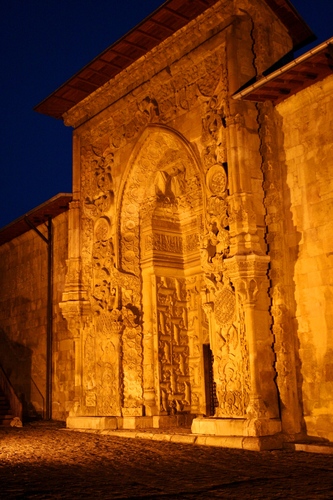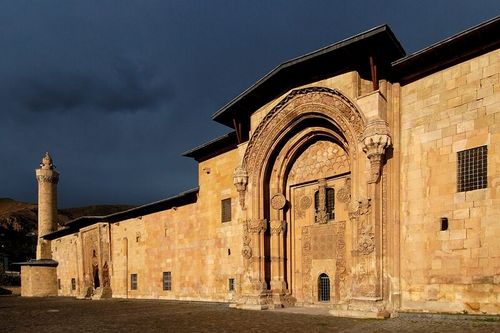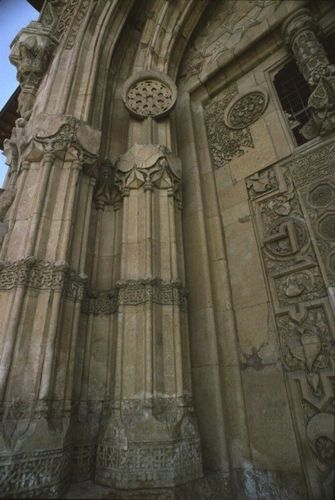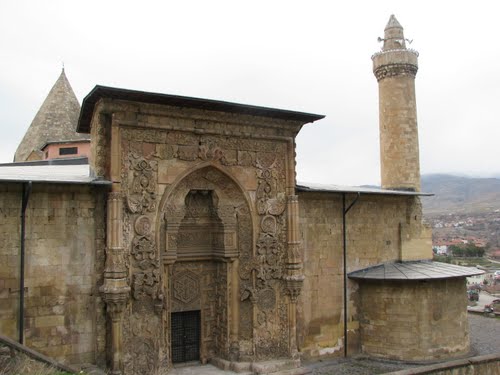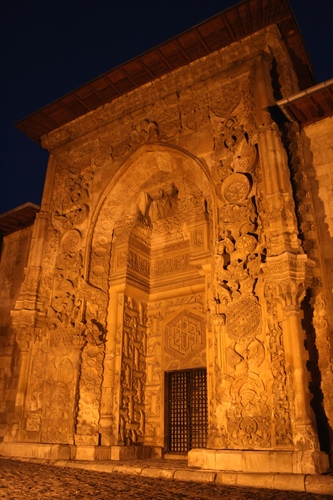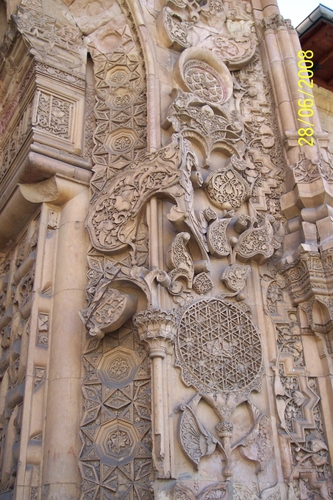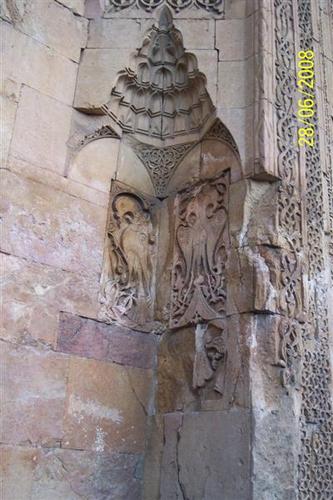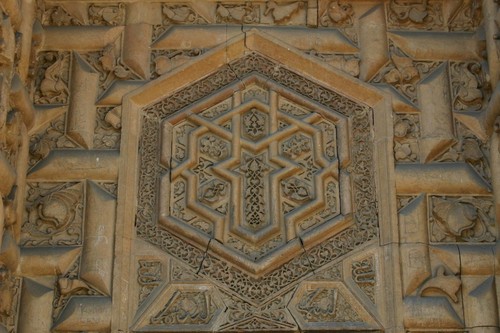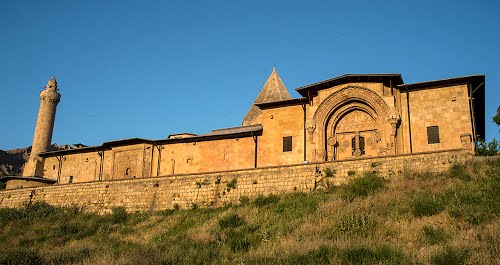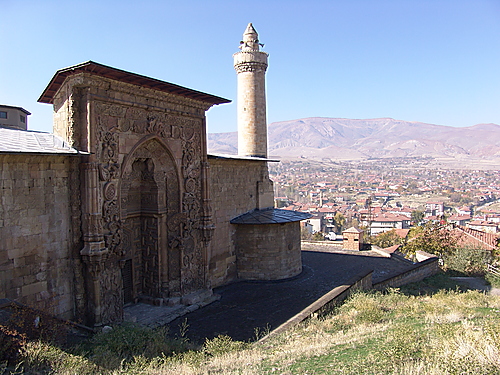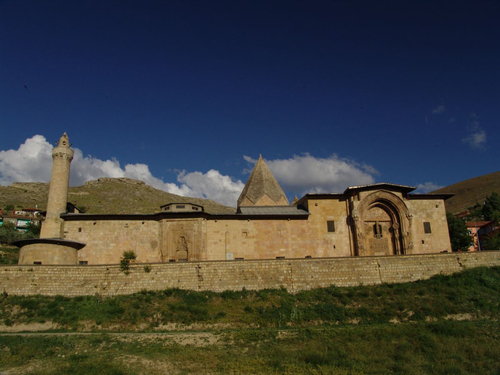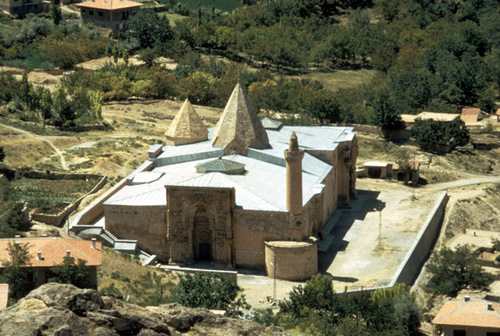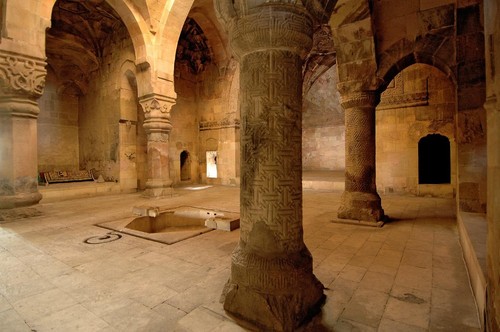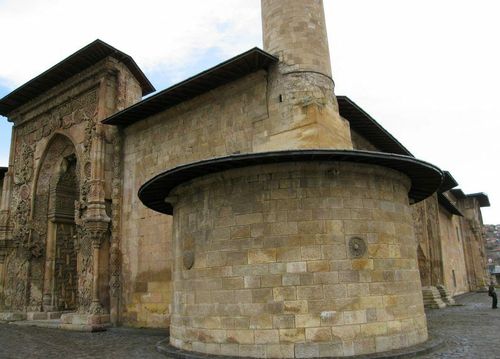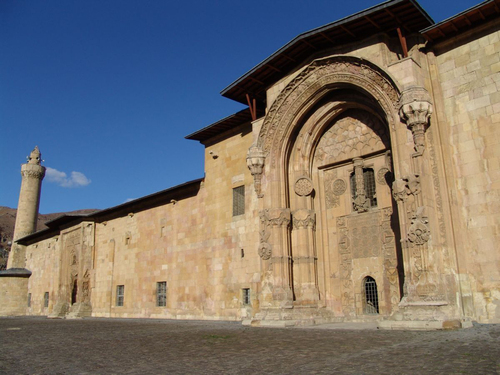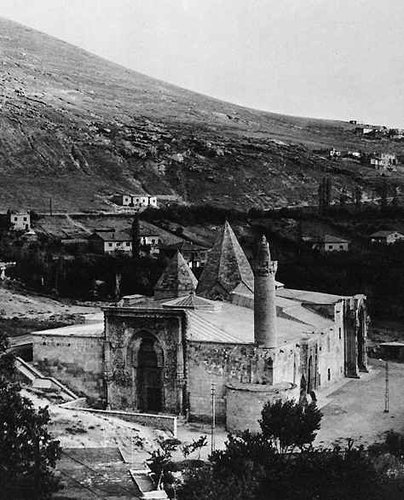Divrigi Great Mosque and Hospital is an ornately decorated mosque and hospital complex built in 1228-1229 by the local dynasty of the Mengujekids in the small eastern Anatolian town of Divrigi, now in Sivas Province in Turkey. The complex is located in the upper town, below the citadel.
Architecture
The building complex consists of a mosque which adjoins the hospital with which it shares its southern, qibla wall. The main entrance to the mosque is on the northern side and is marked by a tall portal which is celebrated for the quality and density of its high-relief stone carving. An entrance on the western side may be from a later date as this facade of the mosque had collapsed and was rebuilt at a later date when it was also strengthened by a round buttress on the north-western corner. A third entrance to the mosque is located on the eastern facade. This entrance appears to have served as a royal entrance which gave access to the raised wooden platform in the southeastern corner of the mosque's interior, reserved for the ruler and his entourage.
A curious detail is the use of shadows of the 3 dimensional ornaments of the entrance to cast the giant shadow of a praying man that changes pose as the sun moves as if to illustrate what the purpose of the building is.
The interior of the mosque consists of stone piers which support the stone vaults above. The central bay of the mosque appears to have been left open to the sky, as is the case in other medieval Anatolian mosques which omit courtyards. Some of the original wooden furnishings of the mosque survive along its qibla wall, such as the shutters on the window opening to the tomb chamber within the hospital and its wooden minbar dated to 1243 and signed by the craftsman Ibrahim b. Ahmad al-Tiflisi. Some carved wooden panels said to belong to the royal platform are today on view in the museum of the Directorate of Pious Endowments in Ankara.
The hospital is entered through its portal located on the western façade. Different in design from the north portal of the mosque, the hospital portal is framed by a monumental pointed arch and features a window in the center. The stone carving here is of the same quality as the main mosque portal but is less dense and appears, in certain places, to be unfinished. The interior of the hospital consists of rooms and iwans placed around a covered courtyard with a small in the center. The hospital has a second story on its southern side which is reached by a staircase just inside the entrance. One of the rooms of the hospital was dedicated to serve as a dynastic tomb chamber. This room has a window opening to the mosque.
The name of the chief architect is inscribed in the interior of both the mosque and the hospital and has been read as Khurramshah b. Mughith al-Khilati. The name indicates his origin in the city of Ahlat, known in the medieval sources as al-Khilat.
The exquisite carvings and architecture of both buildings place them among the most important works of architecture in Anatolia and led to their inclusion on UNESCO's World Heritage List in 1985.



